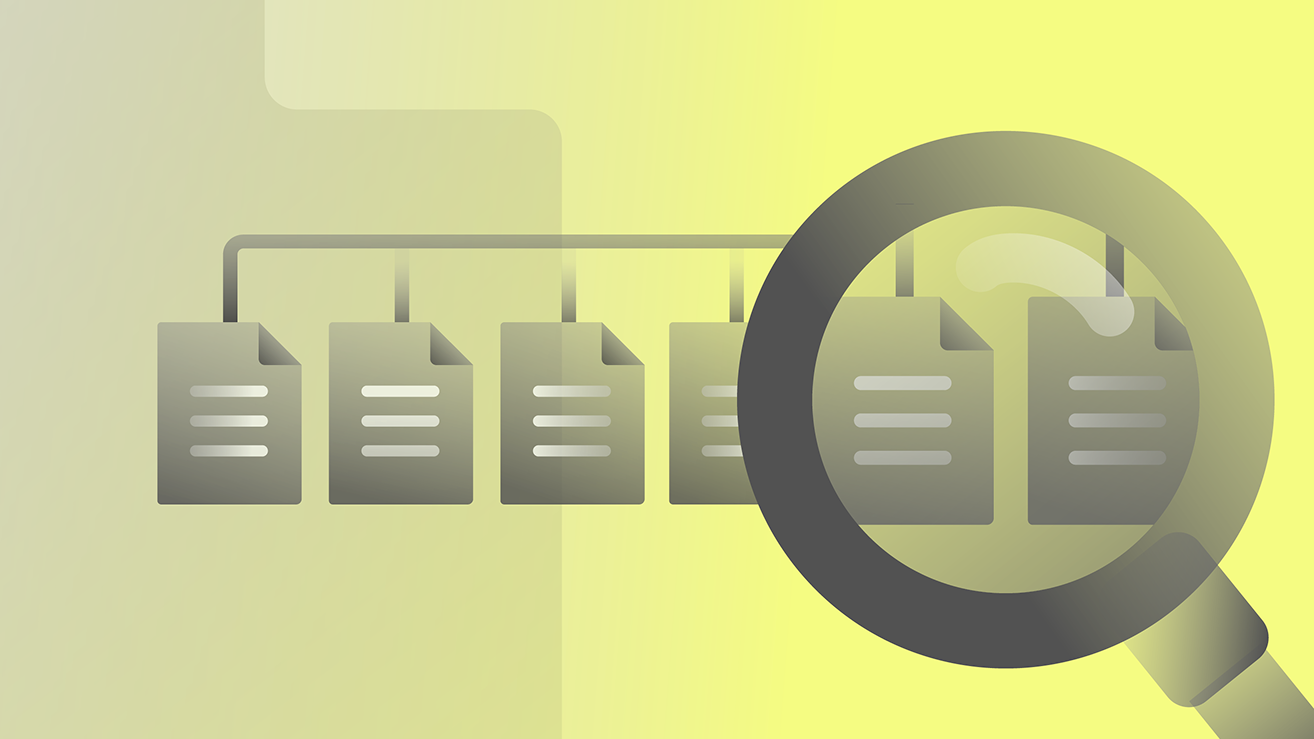
Key Takeaways
Process discovery is the first and most crucial step in any automation or process improvement journey.
- What it is: This guide explains that it is the set of techniques used to understand and document a business process as it is actually performed. This can be done through manual methods or automated tools.
- The business impact: A thorough discovery phase is essential for identifying inefficiencies, bottlenecks, and the best opportunities for automation.
- The key takeaway: Without a clear understanding of the current state, any attempt to improve or automate a process is simply guesswork.
What is Process Discovery?
In today’s enterprise operations, truly effective automation doesn’t begin with technology; it starts with a profound understanding of existing workflows. This is precisely where Process Discovery plays a pivotal role. What is Process Discovery? It is the systematic methodology of identifying, analyzing, and documenting an organization’s current business processes. This meticulous exploration uncovers inefficiencies, bottlenecks, and, most importantly, critical automation opportunities. It serves as the indispensable first step for any successful business process development initiative.
This article guides businesses through the fundamental stages of Process Discovery and subsequent business process development. We will clarify how organizations can precisely identify, strategically design, and optimally refine their internal processes. Our discussion will highlight key methodologies involved in uncovering significant process automation opportunities, ensuring that every automation effort yields maximum return on investment for corporate leaders.
The Essence of Business Process Mapping
Central to Process Discovery is the practice of business process mapping. What is business process mapping? It is the visual representation of a process, illustrating its flow from start to finish. This involves documenting each step, decision point, input, output, and the roles responsible for performing specific tasks in the process. A well-crafted process map provides a clear, concise blueprint of how work actually gets done within an organization.
Effective business process mapping transforms abstract workflows into tangible diagrams, whether they are simple flowcharts or more detailed Business Process Model and Notation (BPMN) diagrams. This visual clarity is crucial for all stakeholders to understand complex operations, pinpoint areas of redundancy, and ultimately lay the groundwork for effective automation and optimization. It’s a foundational discipline for designing a business process.
Strategic Reasons for Process Mapping
Why do you need business process mapping? Beyond mere documentation, process mapping is a strategic tool that illuminates critical insights and paves the way for substantial improvements and the identification of process automation opportunities.
Key reasons include:
- Clarity and Standardization: Maps create a universal understanding of processes, eliminating ambiguity and fostering consistent execution.
- Identifying Inefficiencies: Visualizing workflows makes it easier to spot bottlenecks, redundant steps, unnecessary handoffs, and non-value-added activities.
- Compliance and Auditability: Documented processes provide a clear record for regulatory compliance and internal audit purposes, ensuring adherence to standards.
- Onboarding and Training: New employees can quickly grasp complex workflows, accelerating their productivity and reducing training time.
- Foundation for Automation: Detailed process maps are indispensable for identifying precise points suitable for automation, guiding the development of business process automation initiatives.
- Facilitating Change Management: Understanding current processes is the prerequisite for effectively designing a business process that is optimized for future state operations.
Ultimately, business process mapping is a crucial diagnostic step that informs and guides strategic business process development.
Key Steps for Effective Process Discovery
Successfully navigating Process Discovery requires a structured, methodical approach to maximize insights and identify the most impactful process automation opportunities. Following these steps for process discovery for better ROI ensures a comprehensive and effective outcome. This systematic journey moves from broad understanding to granular detail.
- Define Scope and Objectives: Begin by clearly outlining the processes to be investigated and the desired outcomes (e.g., reduce processing time by X%, improve accuracy). This focuses efforts on high-value areas.
- Gather Information: Collect data through various process discovery methods. This involves interviews with process owners and participants, reviewing existing documentation, and observing live operations.
- Map Current State Processes: Create detailed visual representations of “as-is” processes. This involves business process mapping every step, decision, system interaction, and involved role. This helps in understanding the existing tasks in the process.
- Analyze and Identify Pain Points: Meticulously analyze the mapped processes to identify inefficiencies, redundancies, bottlenecks, manual touchpoints, and areas prone to error. These are prime indicators of process automation opportunities.
- Identify Automation Candidates: Based on analysis, pinpoint specific automation opportunities that are rule-based, high-volume, repetitive, or prone to human error. This is crucial for developing a business process for automation.
- Assess Feasibility and ROI: Evaluate the technical feasibility of automating identified processes and calculate the potential return on investment (ROI). Prioritize opportunities that offer the quickest wins and greatest impact.
- Design Future State Processes: Designing a business process for the “to-be” automated state. This involves reimagining the workflow, incorporating automation at identified points, and optimizing steps for efficiency. This is key for creating a process that is truly transformed.
- Develop and Implement Automation: Build and deploy the automation solution based on the “to-be” design. This phase focuses on the technical development of business process automation.
These steps ensure a systematic approach to unlocking automation value.
Identifying Prime Process Automation Opportunities
A core objective of Process Discovery is to pinpoint where automation can yield the most significant returns. How to identify and select the right Business Processes for RPA? This question extends to broader process automation opportunities, beyond just RPA, encompassing intelligent automation and automated business process discovery. The ideal candidates possess specific characteristics that make them ripe for transformation.
Look for processes that are:
- Repetitive and High-Volume: Tasks performed frequently and consistently, such as data entry or invoice processing.
- Rule-Based and Predictable: Workflows that follow clear, defined rules with minimal human judgment required.
- Prone to Human Error: Processes where manual intervention frequently leads to mistakes, impacting accuracy or compliance.
- Time-Sensitive: Workflows where delays can result in penalties, lost revenue, or reduced customer satisfaction.
- Involve Multiple Systems: Tasks that require employees to switch between numerous applications, creating friction and inefficiencies.
- Require Data Migration/Transcription: Processes that involve moving data between disparate systems or transcribing information from documents.
By focusing on these characteristics, organizations can strategically select process automation opportunities that promise quick wins and substantial ROI, guiding the entire development of business process initiatives for automation.
Methodologies and Tools for Process Discovery
To execute effective Process Discovery, organizations employ various process discovery methods and leverage specialized process discovery tools. These approaches help gather insights and create a clear picture of existing workflows for creating a process that is optimized.
Key methods include:
- Interviews and Workshops: Direct engagement with process participants and stakeholders to gather firsthand accounts of how work flows. This qualitative approach captures nuances and exceptions.
- Observation: Directly observing employees as they perform their tasks in the process to understand the actual steps, challenges, and informal workarounds.
- Process Mining: This process discovery method involves analyzing event logs from IT systems to reconstruct and visualize actual process execution. Process mining automatically identifies bottlenecks, deviations, and compliance gaps. It provides data-driven insights into how processes truly operate, complementing qualitative methods.
- Task Mining: Similar to process mining but focuses on user desktop activity, capturing granular user interactions to identify repetitive tasks suitable for automation.
- Automated Business Process Discovery: This uses AI and machine learning to analyze various data sources (system logs, user clicks, application usage) to automatically discover and map processes, identifying process automation opportunities at scale. This process discovery automation significantly speeds up the initial analysis.
Specialized process discovery tools often include features for process mapping, diagramming, simulation, and analysis, aiding in designing a business process effectively.
Transforming Process Definition and Development with Kognitos
For enterprises undertaking Process Discovery and subsequent business process development, Kognitos simplifies and accelerates these initial phases through its unique natural language AI, making seamless process definition and development accessible to business users.
Kognitos empowers users to describe and define their process automation opportunities in plain English. This bridges the gap between understanding a process and actually creating a process that is automated. It allows users closest to the work to articulate the tasks in the process, and Kognitos translates that directly into executable automation. This makes process discovery automation an intuitive, collaborative effort.
Kognitos’ Unique Impact on Process Discovery and Development:
- Natural Language-Driven Process Definition: Kognitos enables business users to articulate entire processes, including complex decision trees and exceptions, using everyday English. This dramatically simplifies the documentation phase of Process Discovery and accelerates designing a business process for automation.
- Bridging Discovery to Automation: Instead of separate phases for discovery, mapping, and then automation development, Kognitos offers a more integrated path. Once a process is described in natural language, it forms the basis for the automated workflow, effectively creating a direct line from Process Discovery to active automation. This makes developing a business process for automation seamless.
- AI Reasoning for Nuance and Exceptions: While other process discovery tools might just map happy paths, Kognitos’ AI reasoning helps in defining how processes handle real-world variations and exceptions. This ensures that the development of business process automations accounts for complex scenarios, making them more robust and adaptable.
- Inherent Documentation and Auditability: When a process is defined in Kognitos using English as code, the automated workflow itself serves as live, auditable documentation. This provides unparalleled clarity into all tasks in the process and their execution, which is crucial for compliance and governance, simplifying creating a process that is transparent.
- Unified Platform for End-to-End Transformation: Kognitos provides a single platform to automate diverse back-office processes, supporting the entire automation lifecycle from Process Discovery to deployment and continuous refinement. This consolidates efforts and accelerates the overall business process transformation.
Kognitos transforms the often-tedious aspects of Process Discovery and business process development into an intuitive, collaborative, and highly efficient undertaking, directly translating insights into impactful automation.
Benefits of Strategic Process Discovery
Engaging in strategic Process Discovery yields significant advantages that ripple across an entire organization, optimizing operations and accelerating the journey toward digital transformation. Understanding what are the benefits of Process Discovery reveals its foundational importance.
Key benefits include:
- Enhanced Operational Efficiency: Pinpointing and eliminating redundant steps or bottlenecks directly leads to faster, more streamlined workflows and improved resource utilization.
- Significant Cost Reduction: Identifying inefficiencies and automating manual tasks results in lower operational expenditures and better allocation of human capital.
- Improved Accuracy and Quality: Standardizing processes and automating error-prone steps reduces mistakes, leading to higher data quality and consistent service delivery.
- Clearer Understanding of Operations: Provides a comprehensive, shared view of how the business functions, fostering better communication and collaboration across departments.
- Optimized Resource Allocation: Enables better deployment of human talent and technology by clearly identifying where resources are best utilized.
- Strong Foundation for Automation: Serves as the critical blueprint for successful business process transformation, ensuring automation efforts target the most impactful areas.
- Better Compliance and Risk Management: Clear process documentation aids in meeting regulatory requirements and identifying potential compliance gaps, simplifying designing a business process for adherence.
These benefits underscore why Process Discovery is an indispensable investment for any enterprise seeking to thrive in the digital age and capitalize on automation opportunities.
Real-World Illustrations of Process Discovery
The principles of Process Discovery are applied across various industries to unlock efficiency and drive business process transformation. What are some examples of Process Discovery? These illustrations highlight how structured analysis reveals valuable process automation opportunities.
- Accounts Payable (AP) Automation: A finance department might conduct Process Discovery on their AP workflow. They uncover manual data entry from invoices, multiple approval steps, and delays in reconciliation. The discovery reveals process automation opportunities in OCR for data capture, automated matching, and intelligent routing for approvals. This leads to designing a business process that is significantly faster and less error-prone.
- Customer Onboarding in Banking: A bank conducting Process Discovery for new customer onboarding might find numerous paper forms, redundant data entry into different systems, and fragmented handoffs between sales, compliance, and IT. This discovery identifies process automation opportunities for digital forms, API integrations, and workflow orchestration, leading to a seamless, faster, and more compliant onboarding experience.
- IT Service Request Fulfillment: In IT, Process Discovery for service requests might reveal that common requests are handled manually, leading to long resolution times. Analysis shows that simple password resets or software installations can be automated. This paves the way for creating a process where a chatbot handles initial requests, escalating only complex issues, and automates backend fulfillment via integrations.
- Supply Chain Order Processing: A manufacturing company’s Process Discovery for order processing could uncover manual order validation, disparate inventory checks, and manual notification to shipping. This points to process automation opportunities for automated order validation against rules, real-time inventory updates, and automated notifications to logistics, leading to faster order fulfillment and improved customer satisfaction.
These examples of Process Discovery underscore its fundamental role in preparing organizations for impactful automation.
The Future of Intelligent Process Orchestration
Process Discovery is not just a preliminary step; it’s a continuous discipline essential for maintaining agility in an increasingly automated world. As organizations embrace technologies like automated business process discovery and process mining, the initial phase of any automation journey becomes faster and more insightful. The ability to identify, design, and optimize processes with precision will define successful enterprises.
Kognitos fundamentally transforming how Process Discovery insights translate into tangible automation. By enabling the seamless definition and development of business process automation using natural language AI, Kognitos empowers leaders to unlock vast process automation opportunities. This unique approach ensures that businesses can not only identify but also rapidly create business process automations that drive significant ROI and lead to true business process transformation.
Discover the Power of Kognitos
Our clients achieved:
- 97%reduction in manual labor cost
- 10xfaster speed to value
- 99%reduction in human error
Process Discovery is the systematic methodology of identifying, analyzing, and meticulously documenting an organization’s existing business processes. Its primary goal is to gain a comprehensive understanding of current operations, uncover inefficiencies, pinpoint bottlenecks, and, most importantly, identify critical automation opportunities for improvement and business process transformation.
Business process mapping is the visual representation of a process flow, illustrating each step, decision point, input, output, and the roles responsible for performing specific tasks in the process. It serves as a clear blueprint of how work is currently done, aiding in Process Discovery by revealing inefficiencies and guiding the development of business process optimization.
The tasks in the process refer to the individual actions or steps that constitute a complete business process. During Process Discovery, these tasks are meticulously identified, analyzed for their nature (manual, automated, decision-based), and documented to understand their contribution to the overall process workflow and to uncover process automation opportunities.
You need business process mapping because it provides clarity, standardization, and a shared understanding of workflows. It is essential for identifying inefficiencies, ensuring compliance, facilitating onboarding, and serving as the foundational blueprint for Process Discovery and designing a business process for automation. It reveals process automation opportunities that might otherwise remain hidden.
To identify and select the right Business Processes for RPA (and broader automation), focus on processes that are highly repetitive, rule-based, high-volume, prone to human error, time-sensitive, or involve data migration between multiple systems. These characteristics highlight prime process automation opportunities that promise significant ROI following Process Discovery.
The steps for process discovery for better ROI include: defining the scope and objectives, gathering information through interviews/observation, mapping current state processes (using business process mapping), analyzing and identifying pain points, pinpointing automation candidates, assessing feasibility and calculating ROI, and finally, designing a business process for its future automated state. This structured approach, leveraging process discovery methods, helps ensure profitable process automation opportunities.
Some examples of Process Discovery include analyzing an Accounts Payable workflow to identify manual data entry for invoices, uncovering redundant steps in a customer onboarding process in banking, assessing an IT service request fulfillment process to find areas for automation, and mapping supply chain order processing to streamline logistics. Each aims to reveal process automation opportunities for creating a process that is more efficient.
The benefits of Process Discovery are numerous: enhanced operational efficiency, significant cost reduction, improved accuracy and quality, a clearer understanding of complex operations, optimized resource allocation, and a strong, data-driven foundation for successful business process transformation and the identification of high-impact process automation opportunities. It leads to a more effective development of business process automation strategy.








